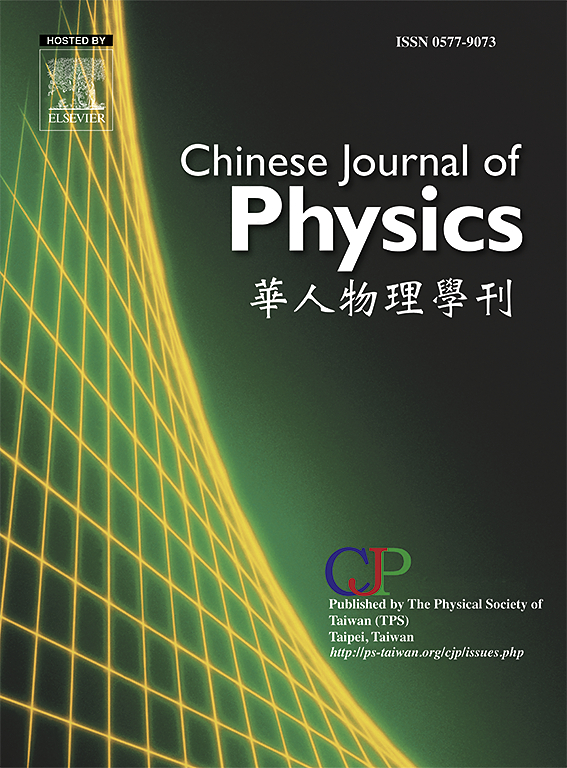Singularity-free dark energy star in Rastall gravity
IF 4.6
2区 物理与天体物理
Q1 PHYSICS, MULTIDISCIPLINARY
引用次数: 0
Abstract
The notion of dark energy presents a potential avenue to avoid the gravitational collapse of compact objects, leading to singularities. The present article is devoted primarily to study a novel singularity-free relativistic solution of the Einstein field equations for dark energy stars in the framework of the Rastall theory of gravity. To analyse our model, we consider the Low-Mass X-ray Binary (LMXB) 4U 1608-52 having a mass of and a radius of 9.3 km (Güver et al., 2010) as a possible dark energy star candidate. We begin with the dark energy equation of state, where the density of dark energy is proportional to the isotropic perfect fluid distribution through a coupling parameter . We compute the induced metric and extrinsic curvature tensors at the stellar hyper-surface to evaluate the necessary unknown constants appearing in the model. We conduct a thorough and comprehensive analysis to demonstrate the dependence of the physical behaviour of the model on the Rastall parameter , and interestingly, we obtain a possible phase transition from the dark to baryonic profile, which is sensitive to both and . We also compute the percentage of dark energy present in the model by varying . However, for a fixed value of , the percentage variation of dark energy with the mass of a star shows that the percentage of dark energy depends on the mass and radius of a star. The causality and energy conditions are well met in the present model, which describes its physical acceptability. The stability of the stellar configuration is established through the study of stability analysis. The graphical nature of the physical parameters and the present theoretical study show that our proposed model is non-singular and a viable representation of a stable realistic stellar structure in the presence of dark and baryonic matter simultaneously.
求助全文
约1分钟内获得全文
求助全文
来源期刊

Chinese Journal of Physics
物理-物理:综合
CiteScore
8.50
自引率
10.00%
发文量
361
审稿时长
44 days
期刊介绍:
The Chinese Journal of Physics publishes important advances in various branches in physics, including statistical and biophysical physics, condensed matter physics, atomic/molecular physics, optics, particle physics and nuclear physics.
The editors welcome manuscripts on:
-General Physics: Statistical and Quantum Mechanics, etc.-
Gravitation and Astrophysics-
Elementary Particles and Fields-
Nuclear Physics-
Atomic, Molecular, and Optical Physics-
Quantum Information and Quantum Computation-
Fluid Dynamics, Nonlinear Dynamics, Chaos, and Complex Networks-
Plasma and Beam Physics-
Condensed Matter: Structure, etc.-
Condensed Matter: Electronic Properties, etc.-
Polymer, Soft Matter, Biological, and Interdisciplinary Physics.
CJP publishes regular research papers, feature articles and review papers.
 求助内容:
求助内容: 应助结果提醒方式:
应助结果提醒方式:


